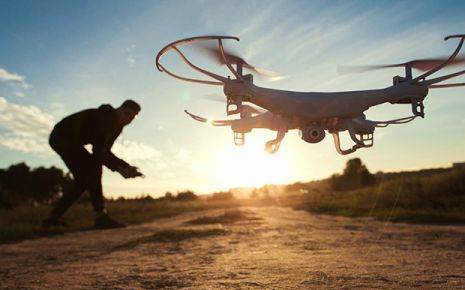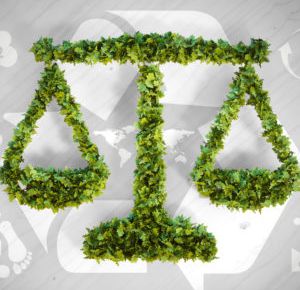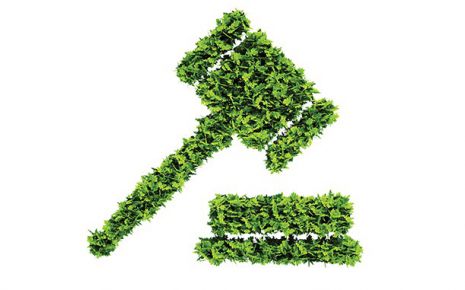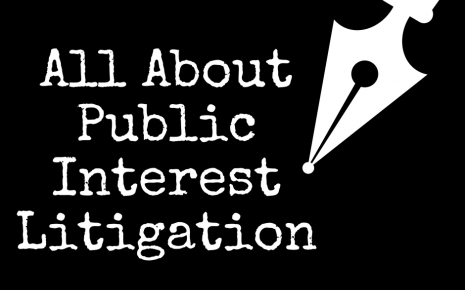The History And Development Of Human Rights In India-Comparative Study Between India And USA�s Human Rights Laws
The present research paper aims at understanding the concept of
evolution of human rights in India and gives a clear outlook of the various
stages. This paper will also take a look at the comparison of USA and India's
human rights. The loopholes in India's human rights with some landmark judgments
will also be looked upon.
�Human Rights are not a privilege conferred by government. They are every human being's entitlement by virtue of his humanity.� -Mother Teresa
Aristotle had said centuries ago, �Man is a social animal.� From birth till childhood; from childhood till maturity; from maturity till adulthood; from adulthood till old-age; from old-age till death, every human exercises some basic rights to live with dignity. Human beings are rational beings. By virtue of their humanity, they are entitled to some rights that are necessary for their peaceful survival. To avoid conflicts in the social environment, one needs to respect the life of others. To fulfill this objective, every human is conferred with rights. These rights, in a layman language, are known as Human Rights.
These rights are inalienable and indispensable. The most unique feature of human rights is that it is difficult to define but impossible to ignore. It has been seen that human rights are essential for every human being in order to live their life to the fullest.
In ancient India, law was based on the principle of Dharma. The Epics � Ramayana and Mahabharata make us learn that Dharma was ordained for the advancement of all creatures as well as restraining creatures from injuring one another. The righteousness has been described as the essence of Dharma in The Bhagwad Geeta. The Upanishads speak of Dharma as the foundation of whole universe. The Vedas and Smritis talk about the concept of �VasudhaivKutumbakam� (the whole world as one family). All the four Vedas insist on equality and dignity for humans.
The teachings of Buddha worked effectively for the protection of human rights. The great King Ashoka had been successful in the creation of a welfare state for his subjects and provided them with basic freedoms and rights.
Hence, it is very much clear that Ancient Indian Literatures stood for enlarging and encouraging human rights, freedoms, liberty and equality for all people irrespective of any discrimination based on caste, creed, gender, sex, religion.
In his religious policy Din-E-Ilahi (divine-religion), he tried to preach the idea of secularism and religious tolerance. Similarly, various religious movements like Bhakti (Hindu) and Sufi (Islamic) made remarkable contribution to the emergence of human rights which at times suppressed by the other Mughal Emperors like Babar, Humayun, and Aurangzeb.
After witnessing the colonial rule, every Indian was of the firm opinion that the recognition, protection and implementation of human rights are not only basic but also inalienable for them for leading a civilized life.
The Preamble, Fundamental Rights, Directive Principles of State Policy, newly added Fundamental Duties, reservation for scheduled castes and tribes, special provisions for Anglo- Indians and other backward classes are important constitutional provisions from the human rights point of view.
The study of human rights with reference to Indian Constitution reveals that the Constitution enshrines almost all the human rights provided in the various international conventions, covenants and treaties, such as:
Apart from the various constitutional provisions, various statutes have also been enacted by the Indian legislature with a view to protect and promote human rights.
Some of the important legislations enacted by the union are:
In this way, the concept of human rights developed and deepened its roots in India.
INDIA � Numerous cases of rapes, sexual harassment at workplace, abuses to women have increased over a period of time. To protect women, the government launched a national registry of sexual offenders. The Supreme Court lifted ban on entry of women of menstruating age � between10 and 50 � to a temple in Southern India.
INDIA - India's Supreme Court struck down section 377 of India's penal code, decriminalizing consensual adult same-sex relations. The ruling followed decades of struggle by activists, lawyers, and members of LGBT communities. The Lower House of Parliament of India also passed the Transgender Persons (Protection of Rights) Bill, 2018. Even after several amendments were proposed in the bill, it failed to protect the community adequately.
INDIA - Authorities continued to use laws on sedition, defamation, and counterterrorism to crack down on dissent. Journalists faced increasing pressure to self-censor due to threat of legal actions, smear campaigns and threat on social media, even threat of physical attacks. State governments resorted to blanket internet shutdown either to prevent violence and social unrest or to respond to an ongoing law and order problem.
INDIA � The status of Jammu and Kashmir; Impunity for security forces like UAPA and AFSPA; Rights of Dalits, Tribal groups, and Religious Minorities; Civil society and freedom of association; Refugee and Citizenship Rights like CAA, 2019; Disability Rights, are other examples of violation of human rights in India.
Also, there are many good laws in both the countries to protect the human rights of the citizens. But the main loophole is in implementation of those laws. The legislature of both the countries are concerned about making laws for the betterment of public but the executives, in implementing those laws successfully, have failed somewhere.
USA has disengaged its funds from various international platforms including ICC, UNHRC, and UN High Commissioner for Human Rights, etc. Whereas, India is trying its level best to engage itself in international forums more and more. It is doing everything that it can do to protect human rights and dignity of its citizens.
However, USA is far better than India in World Human Rights Index.
The above statistics is horrible. This is the condition of India in the matters of human rights violations. These statistics reveal about the loopholes that Indian legal system, especially in terms of human rights, is facing.
Mohd. Ahmed Khan v. Shah Bano Begum, 1985[5]
Subject: Right to maintenance
Muslim personal law was challenged in this petition. The Supreme Court ruled in favor of Shah Bano and granted her alimony which the Muslim community felt as an encroachment on Muslim Sharia law. The decision of the case led to the formation of the All India Muslim Personal Law Board in 1973.
MC Mehta v. Union of India, 1986[6]
Subject: Right to Life
MC Mehta filed a Public Interest Litigation for escape of poisonous gases by a plant in Bhopal. The court in this case extended the scope of Article 21 and 32 of the Constitution of India. The case is also famous as Bhopal Gas Tragedy.
Vishaka v. State of Rajasthan, 1997[7]
Subject: Working conditions for women employees
This case came before the Supreme Court as a Public Interest Litigation against State of Rajasthan and Union of India by Vishaka and other women groups. The petitioners demanded enforcement fundamental rights for working women under Articles 14, 19 and 21 of the Constitution. For this, Vishaka Guidelines were issued. The judgment also provided basic definitions of sexual harassment at the workplace along with provided guidelines to deal with the same.
Naz foundation v. NCT, 2009[8]
Subject: Rights of LGBTs
The court decriminalized sexual activities �against the order of nature� which included homosexual acts, as per Section 377 of the Indian Penal Code. But this judgment was overruled in 2013 by the Supreme Court of India.
NALSA v. Union of India, 2014[9]
Subject: Rights of transgender
The Court recognized rights of the transgender as third genders. Also, ordered government to treat them as minorities. Reservations in jobs, education and other amenities shall also be provided to them.
Shreya Singhal v. Union of India, 2015[10]
Subject: Right to freedom of speech and expression
The apex Court held section 66A of the Information Technology Act which allowed arrests for objectionable content posted on the internet as unconstitutional and hence, struck down by the impugned section.
Conclusion
As we have dealt with what human rights are and its history and development, we are pretty much clear about the issues that are to be taken care of. We also compared the human rights laws and conditions of India and USA. The laws are very much similar in both the countries and are effective on paper. But the successful implementation of these laws is the need of the hour. The loopholes, which we discussed, are acting as a dodge in the implementation of these human rights laws. The possible solutions for tackling these issues which are acting as barriers can be:
In sum, �To deny people their human rights is to challenge their very humanity.�-Nelson Mandela
End-Notes:
�Human Rights are not a privilege conferred by government. They are every human being's entitlement by virtue of his humanity.� -Mother Teresa
Aristotle had said centuries ago, �Man is a social animal.� From birth till childhood; from childhood till maturity; from maturity till adulthood; from adulthood till old-age; from old-age till death, every human exercises some basic rights to live with dignity. Human beings are rational beings. By virtue of their humanity, they are entitled to some rights that are necessary for their peaceful survival. To avoid conflicts in the social environment, one needs to respect the life of others. To fulfill this objective, every human is conferred with rights. These rights, in a layman language, are known as Human Rights.
Meaning Of Human Rights
According to UN, �human rights are rights inherent to all human beings, regardless of race, sex, nationality, ethnicity, language, religion, or any other status. Human rights include the right to life and liberty, freedom from slavery and torture, freedom of opinion and expression, the right to work and education, and many more. Everyone is entitled to these rights, without discrimination.�[1]These rights are inalienable and indispensable. The most unique feature of human rights is that it is difficult to define but impossible to ignore. It has been seen that human rights are essential for every human being in order to live their life to the fullest.
History And Development Of Human Rights In India[2]
The history and development of human rights in India can be divided into three stages � Ancient, Medieval, and Modern.Human Rights In Ancient India
The concept of human rights is not alien to Indian political thinkers and philosophers. The concept is as old as ancient civilization.In ancient India, law was based on the principle of Dharma. The Epics � Ramayana and Mahabharata make us learn that Dharma was ordained for the advancement of all creatures as well as restraining creatures from injuring one another. The righteousness has been described as the essence of Dharma in The Bhagwad Geeta. The Upanishads speak of Dharma as the foundation of whole universe. The Vedas and Smritis talk about the concept of �VasudhaivKutumbakam� (the whole world as one family). All the four Vedas insist on equality and dignity for humans.
The teachings of Buddha worked effectively for the protection of human rights. The great King Ashoka had been successful in the creation of a welfare state for his subjects and provided them with basic freedoms and rights.
Hence, it is very much clear that Ancient Indian Literatures stood for enlarging and encouraging human rights, freedoms, liberty and equality for all people irrespective of any discrimination based on caste, creed, gender, sex, religion.
Human Rights In Medieval India
The Medieval period signifies the Muslim era in India. The Pre-Mughal period saw the existence of social, political, cultural, religious rights. But with the advent of Mughals, the concept of human rights got lost in the dark. But Akbar's period (1526-1605) showed that the great regard was given to the social, religious and political rights.In his religious policy Din-E-Ilahi (divine-religion), he tried to preach the idea of secularism and religious tolerance. Similarly, various religious movements like Bhakti (Hindu) and Sufi (Islamic) made remarkable contribution to the emergence of human rights which at times suppressed by the other Mughal Emperors like Babar, Humayun, and Aurangzeb.
Human Rights In Modern India
The British rule in India can be seen in the Modern period. During this period, the British Government of India had not only deprived the Indian people of their freedom but had based itself on the exploitation of the masses, and ruined India economically, politically, culturally and spiritually.After witnessing the colonial rule, every Indian was of the firm opinion that the recognition, protection and implementation of human rights are not only basic but also inalienable for them for leading a civilized life.
The Preamble, Fundamental Rights, Directive Principles of State Policy, newly added Fundamental Duties, reservation for scheduled castes and tribes, special provisions for Anglo- Indians and other backward classes are important constitutional provisions from the human rights point of view.
The study of human rights with reference to Indian Constitution reveals that the Constitution enshrines almost all the human rights provided in the various international conventions, covenants and treaties, such as:
- Universal Declaration of Human Rights, 1948;
- International Covenant on Economic, Social and Cultural Rights, 1976;
- International Covenant on Civil and Political Rights, 1976;
- Convention on the Prevention and Punishment of the Crime of Genocide, 1948;
- International Convention on the Elimination of All Forms of Racial Discrimination, 1965;
- Convention on the Elimination of All Forms of Discrimination against Women, 1979;
- Convention on the Rights of Child, 1989;
- Convention on the Rights of Persons with Disabilities, 2006.
Apart from the various constitutional provisions, various statutes have also been enacted by the Indian legislature with a view to protect and promote human rights.
Some of the important legislations enacted by the union are:
- Protection of Human Rights Act, 1993;
- National Commission for Minorities Act,1992;
- National Commission for Women Act, 1990;
- Protection of Civil Rights Act, 1995;
- Scheduled Castes and Scheduled Tribes (Prevention of Atrocities) Act, 1989;
- Immoral Traffic (Prevention) Act, 1987;
- Bonded Labor System (Abolition) Act, 1976;
- Juvenile Justice (Care and Protection of Children) Act, 2000;
- Child Labor (Prohibition and Regulation) Act, 1986 etc.
In this way, the concept of human rights developed and deepened its roots in India.
Comparison Between India And Usa's Human Rights Law
The human rights, basically, are same in every country. Therefore, the comparison can be done on the basis of the human rights' violation and its implementation in different ways in different countries. In this research article, we are going to take a look at the comparison of India and USA's Human Rights.Women's Rights
USA � Revelations related to sexual harassment and misconduct by high-profile men continued to be made as the #MeToo movement expanded virally, highlighting abuses suffered by women at work and in public places. A few states took steps to proactively protect or expand protections for women's health. However, several states adopted highly restrictive laws on abortion and reproductive health.INDIA � Numerous cases of rapes, sexual harassment at workplace, abuses to women have increased over a period of time. To protect women, the government launched a national registry of sexual offenders. The Supreme Court lifted ban on entry of women of menstruating age � between10 and 50 � to a temple in Southern India.
Sexual Orientation And Gender Discrimination
USA � 19 states in America have laws expressly banning discrimination based on both sexual orientation and gender identity in employment, housing, and public accommodations.INDIA - India's Supreme Court struck down section 377 of India's penal code, decriminalizing consensual adult same-sex relations. The ruling followed decades of struggle by activists, lawyers, and members of LGBT communities. The Lower House of Parliament of India also passed the Transgender Persons (Protection of Rights) Bill, 2018. Even after several amendments were proposed in the bill, it failed to protect the community adequately.
Freedom Of Expression And Assembly
USA � Hundreds of media outlets published coordinated defenses of press freedom in USA. Journalists also experienced deadly violence and threats. US technology companies faced increased pressure from lawmakers to restrict speech on their platforms. A new law aimed at curbing online sex trafficking made websites liable for what users say and do on their platforms.INDIA - Authorities continued to use laws on sedition, defamation, and counterterrorism to crack down on dissent. Journalists faced increasing pressure to self-censor due to threat of legal actions, smear campaigns and threat on social media, even threat of physical attacks. State governments resorted to blanket internet shutdown either to prevent violence and social unrest or to respond to an ongoing law and order problem.
Other Human Rights Violations
USA � Harsh criminal sentencing; Racial disparities, drug policy, and policing; Children in the criminal and juvenile justice systems; Poverty and criminal justice; Incidents of hate crimes; Deteriorating rights of non-citizens; Right to health; Repressive laws of national security, are severely violating the human rights in USA.INDIA � The status of Jammu and Kashmir; Impunity for security forces like UAPA and AFSPA; Rights of Dalits, Tribal groups, and Religious Minorities; Civil society and freedom of association; Refugee and Citizenship Rights like CAA, 2019; Disability Rights, are other examples of violation of human rights in India.
Key Facts Of Comparison
As we have seen in previous few paragraphs, there are similarities in the issues of India and USA's Human Rights violations. The Right to Freedom of Speech and Expression; Women's Rights; Children's Rights; Minorities' Rights; Other authoritative laws of States, are being violated on a continuous basis in both the countries.Also, there are many good laws in both the countries to protect the human rights of the citizens. But the main loophole is in implementation of those laws. The legislature of both the countries are concerned about making laws for the betterment of public but the executives, in implementing those laws successfully, have failed somewhere.
USA has disengaged its funds from various international platforms including ICC, UNHRC, and UN High Commissioner for Human Rights, etc. Whereas, India is trying its level best to engage itself in international forums more and more. It is doing everything that it can do to protect human rights and dignity of its citizens.
However, USA is far better than India in World Human Rights Index.
Loopholes In Context To Human Rights In India
|
Monthly Salient Statistics Of Cases Registered/Disposed By Nhrc ( October 2020 ) [3] |
|||
| Name Of Incidents | Cases Registered | Cases Disposed | Cases Pending |
| Custodial deaths (police) | 8 | 8 | 315 |
| Custodial deaths (judicial) | 141 | 154 | 3111 |
| Death in police encounter | 4 | 16 | 557 |
| Bonded labor | 21 | 37 | 803 |
| Children | 71 | 77 | 554 |
| Women | 437 | 412 | 2295 |
| SC/ST/OBC | 83 | 107 | 635 |
| Others | 6380 | 6925 | 9757 |
The above statistics is horrible. This is the condition of India in the matters of human rights violations. These statistics reveal about the loopholes that Indian legal system, especially in terms of human rights, is facing.
- NHRC has been reduced to a toothless tiger: SC points out the loopholes in a case of extra-judicial killings, commonly known as 'encounter deaths' in Manipur. SC reiterates, �If the people of our own country are deprived of human rights or cannot have them enforced, democracy itself would be in perils.�[4]
- The human rights violations can be avoided if high-powered formed for the protection of human rights in the country are made effective and given real arsenal.
- Many states are yet to form their human rights commission.
- A lack of accountability for misconduct persisted at all levels of government, contributing to widespread impunity.
- Investigation and prosecution of individual cases took place, but lax enforcement, a shortage of trained police officers, and an overburdened and under-resourced court system contributed to a small number of convictions.
- Separatist insurgents and terrorists in the state of Jammu and Kashmir, the north-east and Maoist-affected areas committed serious human rights abuses.
- Corruption and Bureaucracy of Indian government and opposition, too, is a major issue.
Other Human Rights Violations
The Hon'ble Supreme Court has time-to-time reiterated the fact that human rights are supreme in its various judgments. The landmark rulings of the Supreme Court are as follows:Mohd. Ahmed Khan v. Shah Bano Begum, 1985[5]
Subject: Right to maintenance
Muslim personal law was challenged in this petition. The Supreme Court ruled in favor of Shah Bano and granted her alimony which the Muslim community felt as an encroachment on Muslim Sharia law. The decision of the case led to the formation of the All India Muslim Personal Law Board in 1973.
MC Mehta v. Union of India, 1986[6]
Subject: Right to Life
MC Mehta filed a Public Interest Litigation for escape of poisonous gases by a plant in Bhopal. The court in this case extended the scope of Article 21 and 32 of the Constitution of India. The case is also famous as Bhopal Gas Tragedy.
Vishaka v. State of Rajasthan, 1997[7]
Subject: Working conditions for women employees
This case came before the Supreme Court as a Public Interest Litigation against State of Rajasthan and Union of India by Vishaka and other women groups. The petitioners demanded enforcement fundamental rights for working women under Articles 14, 19 and 21 of the Constitution. For this, Vishaka Guidelines were issued. The judgment also provided basic definitions of sexual harassment at the workplace along with provided guidelines to deal with the same.
Naz foundation v. NCT, 2009[8]
Subject: Rights of LGBTs
The court decriminalized sexual activities �against the order of nature� which included homosexual acts, as per Section 377 of the Indian Penal Code. But this judgment was overruled in 2013 by the Supreme Court of India.
NALSA v. Union of India, 2014[9]
Subject: Rights of transgender
The Court recognized rights of the transgender as third genders. Also, ordered government to treat them as minorities. Reservations in jobs, education and other amenities shall also be provided to them.
Shreya Singhal v. Union of India, 2015[10]
Subject: Right to freedom of speech and expression
The apex Court held section 66A of the Information Technology Act which allowed arrests for objectionable content posted on the internet as unconstitutional and hence, struck down by the impugned section.
Conclusion
As we have dealt with what human rights are and its history and development, we are pretty much clear about the issues that are to be taken care of. We also compared the human rights laws and conditions of India and USA. The laws are very much similar in both the countries and are effective on paper. But the successful implementation of these laws is the need of the hour. The loopholes, which we discussed, are acting as a dodge in the implementation of these human rights laws. The possible solutions for tackling these issues which are acting as barriers can be:
- to prevent corruption and bureaucracy,
- speedy disposal of cases by setting-up more and more fast-track courts,
- allotting adequate resources in the execution of the matters,
- hiring of public servants on the basis of their skills and education and not on the basis of any recommendation by powerful people,
- spreading awareness amongst people about their rights as well as responsibilities.
In sum, �To deny people their human rights is to challenge their very humanity.�-Nelson Mandela
End-Notes:
- https://www.un.org/en/sections/issues-depth/human-rights/
- Ms. Nidhi Madan, History and Development of Human Rights in India, Volume 22, Issue 6, IOSR Journal of Humanities and Social Sciences, 2017
- NHRC Report, National Human Rights Commission, India, October 2020
- http://www.catchnews.com/indis-news/nhrc-has-been-reduced-to-a-toothless-tiger-supreme-court-points-out-the-loopholes-72119.html
- AIR 1985 SC 945
- 1987 SCR (1) 819
- AIR 1997 SC 3011
- 160 DLT 277
- WP (Civil) No. 400 of 2012
- WP (Criminal) No. 167 of 2012
Law Article in India
Legal Question & Answers
Lawyers in India - Search By City
LawArticles
How To File For Mutual Divorce In Delhi

How To File For Mutual Divorce In Delhi Mutual Consent Divorce is the Simplest Way to Obtain a D...
Increased Age For Girls Marriage

It is hoped that the Prohibition of Child Marriage (Amendment) Bill, 2021, which intends to inc...
Facade of Social Media

One may very easily get absorbed in the lives of others as one scrolls through a Facebook news ...
Section 482 CrPc - Quashing Of FIR: Guid...

The Inherent power under Section 482 in The Code Of Criminal Procedure, 1973 (37th Chapter of t...
The Uniform Civil Code (UCC) in India: A...

The Uniform Civil Code (UCC) is a concept that proposes the unification of personal laws across...
Role Of Artificial Intelligence In Legal...

Artificial intelligence (AI) is revolutionizing various sectors of the economy, and the legal i...








Please Drop Your Comments